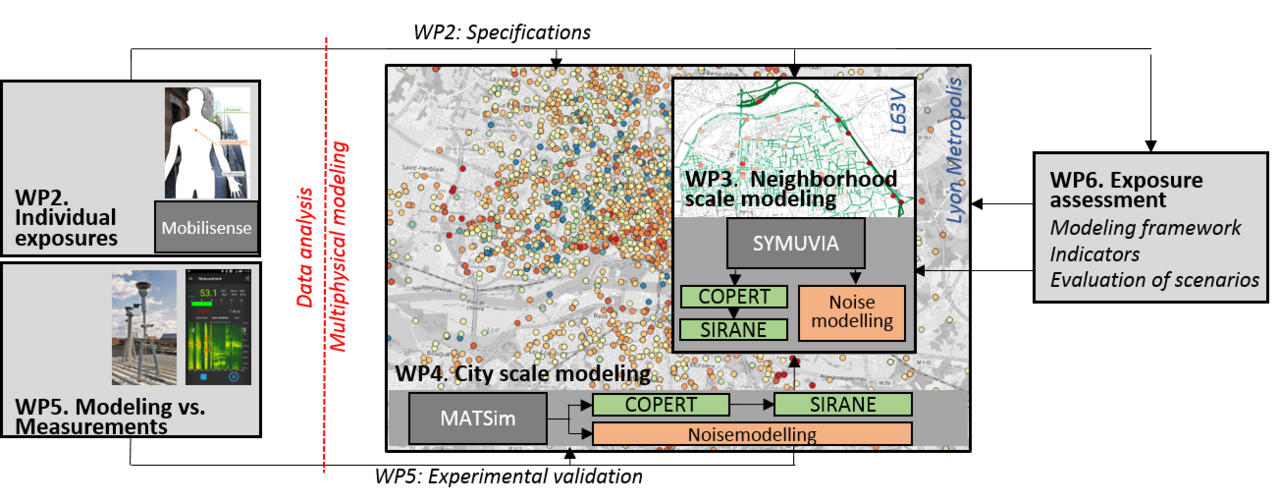About
The SYMEXPO project aims to develop a “SYstemic approach for assessing the impact of urban Mobility on EXposure to environmental POllutions”, based on a modelling framework where a city dweller is represented as a mobile agent evolving in a pollution field subject to spatial and temporal variations. The environmental pollutions we consider are noise and atmospheric pollutants.
To meet this challenge, an interdisciplinary team of internationally recognized experts in epidemiology, environmental acoustics, air pollutant dispersion, road traffic modelling and environmental economics has been set up. The expected scientific advances are the following:
- Use data analysis to advance knowledge on: (i) which individual mobility factors (mode of transport, activities, life rhythm, etc.) are associated with high exposures, (ii) which indicators reflect the effects of the temporal dynamics of exposures;
- Build integrated open-source modelling chains capable of determining the space and time variations of pollutions (noise and atmospheric pollutants), and based on traffic models capturing the effects of mobility policies. Two scales are considered, namely the neighborhood and the metropolitan scale, calling for two different traffic models, respectively SYMUVIA and MATSim, calibrated on the same study site in Lyon Metropolis. The modeling chain for noise will rely on the NoiseModelling software. The modeling chain for atmospheric pollutants will rely on HBEFA and SIRANE ;
Propose a multi-criteria assessment framework (noise and air pollutants) for mobility policies, integrating the dimension of environmental justice, and accounting for the agent’s mobility

